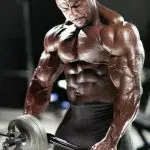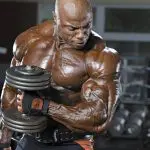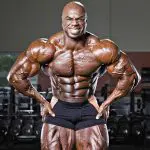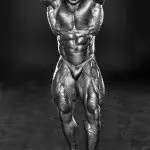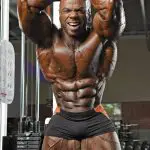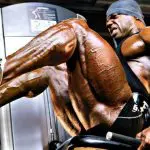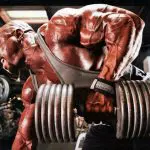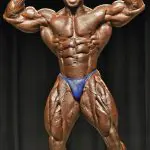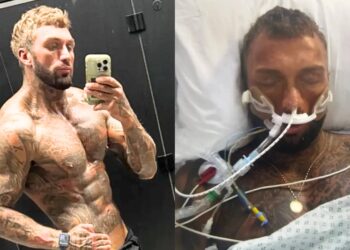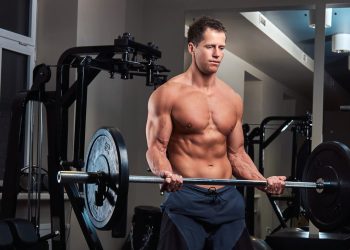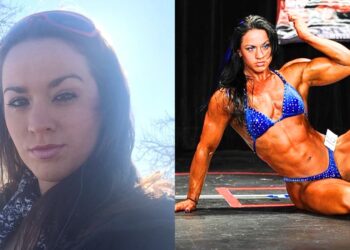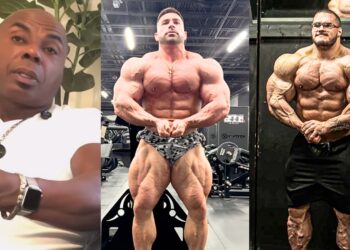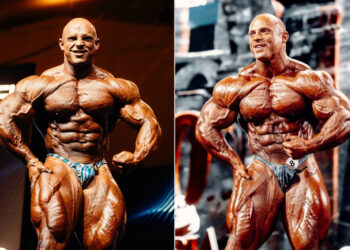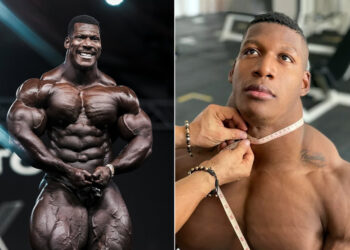Toney Freeman is a retired American professional bodybuilder who competed in the Men’s Open division of the IFBB Pro League. A notable bodybuilder from the 2000s and the 2010s era of bodybuilding, Freeman won several pro shows and had impressive performances in several others. This article explores his complete profile, biography, competition history, workout routine, and diet.
About Toney Freeman
Born: August 30, 1966
Birthplace: South Bend, Indiana, USA
Residence: Atlanta, Georgia, USA
Nickname: X-Man, Big T
Height: 6′ 2″ (188 cm)
Off Season Weight: 325 lbs (147,5 kg)
Competition Weight: 290 lbs (131,5 kg)
Arms: 23″ (58 cm)
Wrist: 7,25″ (19 cm)
Legs: 32″ (81 cm)
Chest: 56″ (142 cm)
Calf: 19,5″ (49 cm)
Waist: 34″ (87 cm)
Toney Freeman Biography
Toney Freeman (born August 30, 1966) is an American IFBB professional bodybuilder and brand ambassador residing in Atlanta, Georgia (USA).
Freeman did not become a competitive bodybuilder professional until his late 30s because for many years it was a hobby and the sport was dominated by his idols Lee Haney, Dorian Yates. It took him many years to fill out his large frame and he was mentored by Dave Palumbo to become a professional.
Level Up Your Fitness: Join our 💪 strong community in Fitness Volt Newsletter. Get daily inspiration, expert-backed workouts, nutrition tips, the latest in strength sports, and the support you need to reach your goals. Subscribe for free!
Freeman’s first (National Physique Committee) competition was in 1993, where he won the heavyweight class of the NPC Junior Nationals. His first IFBB event was the Night of Champions competition, where he placed 11th. His first Arnold Classic was in 2005, where he placed 10th.
His first Ironman Pro Invitational was in 2006, where he placed 7th. His first Mr. Olympia appearance was in 2006, where he placed 7th. In 2007 he won the Ironman Pro, Sacramento Pro and placed 3rd at the Arnold Classic. He made the top 5 at the 2008 Mr.Olympia.
Toney Freeman’s nickname is The X Man because his body characterizes the X-frame of classical bodybuilding: broad shoulders, narrow waist, and flaring thighs. He featured on the cover and pages of FLEX Magazine, Muscular Development, and Robert Kennedy’s Musclemag.
Toney Freeman Competition History
- 1993 National Bodybuilding, Fitness and Figure Championships, Men’s Heavyweight – 6th place
- 1993 Junior National Bodybuilding, Fitness and Figure Championships, Men’s Heavyweight – 1st place
- 1994 National Bodybuilding, Fitness and Figure Championships, Men’s Heavyweight – 4th place
- 1995 National Bodybuilding, Fitness and Figure Championships, Men’s Heavyweight – 4th place
- 1996 National Bodybuilding, Fitness and Figure Championships, Men’s Heavyweight – 16th place
- 2001 National Bodybuilding, Fitness and Figure Championships, Men’s Super Heavyweight – 8th place
- 2002 National Bodybuilding Championships – Men’s Super Heavyweight – 1st place and Overall winner (Earned IFBB Pro Card)
- 2003 GNC Show of Strength, Men’s – 9th place
- 2003 Night of Championships XXV, Men’s – 11th place
- 2004 GNC Show of Strength, Men’s – 8th place
- 2004 Night of Championships XXVI, Men’s – 10th place
- 2005 Arnold Classic, Men’s Open – 10th place
- 2006 Mr. Olympia – 7th place
- 2006 Europa Supershow – 1st place
- San Francisco Men’s Pro Bodybuilding and Pro Figure Championships – 5th place
- 2006 Arnold Classic – 9th place
- 2006 Ironman Pro Invitational – 7th place
- 2007 Mr. Olympia – 14th place
- 2007 Arnold Classic – 3rd place
- 2007 Ironman Pro Invitational – 1st place
- 2008 Mr. Olympia – 5th place
- 2008 Atlantic City Pro, Masters – 2nd place
- 2008 Atlantic City Pro, Mn’s Open – 4th place
- 2008 Europa Supershow – 1st place
- 2008 Tampa Bay Pro – 1st place
- 2008 Grand Prix New Zealand – 3rd place
- 2008 Arnold Classic – 7th place
- 2008 Ironman Pro Invitational – 8th place
- 2009 Sacramento Pro – 1st place
- 2009 Mr. Olympia – 8th place
- 2009 Grand Prix Australia – 3rd place
- 2009 Arnold Classic – 4th place
- 2010 Mr. Olympia 9th place
- 2010 New York Pro – 4th place
- 2010 Arnold Classic – 5th place
- 2010 Phoenix Pro – 3rd place
- 2011 IFBB Pro World Masters Championships – 2nd place
- 2011 Arnold Classic Europe – 4th place
- 2011 Sheru Classic – 6th place
- 2011 Mr. Olympia – 7th place
- 2011 IFBB Europa Pro Supershow – 1st place
- 2011 Europa Battle of Champions – 6th place
- 2011 Grand Prix Mr. Europe – 5th place
- 2011 Grand Prix UK – 6th place
- 2011 Arnold Classic – 9th place
- 2012 Masters Olympia – 2nd place
- 2012 EVLS Prague Pro – 5th place
- 2012 Grand Prix UK – 3rd place
- 2012 Arnold Classic Europe – 5th place
- 2012 Sheru Classic – 3rd place
- 2012 Mr. Olympia – 7th place
- 2012 Europa Supershow – 3rd place
- 2012 PBW Tampa Championships – 2nd place
- 2013 EVLS Prague Pro – 6th place
- 2013 Arnold Classic Europe – 7th place
- 2013 Mr. Olympia – 15th place
- 2013 Mr. Europe Pro – 3rd place
- 2013 Arnold Classic Brazil – 2nd place
- 2013 Australia Pro – 2nd place
- 2013 Arnold Classic – 3rd place
- 2014 Golden State – 8th place
- 2014 Toronto Pro – 4th place
- 2014 Arnold Classic Brazil – 5th place
- 2014 Arnold Classic – 9th place
- 2015 Arnold Classic – 10th place
- 2015 Europa Pro Supershow – 8th place
- 2015 Arnold Classic Brazil – 6th place
- 2015 Arnold Classic Australia – 8th place
- 2016 Arnold Classic – 12th place
- 2016 Levrone Classic – 4th place
Toney Freeman Workout
Throughout his bodybuilding career, Toney Freeman focused more on aesthetics instead of getting huge. He strived to build other attributes like symmetry, proportions, muscle definition as well as functional strength rather than being the biggest man on the stage.
An intricately crafted training routine based on solid principles helped Freeman add meaningful muscle. Typically, he trained for 13 to 14 days following the below-mentioned routine, took one or two days off, and repeated the split.
Training split
Day 1 – Legs (Quadriceps focused)
Similar to most of the other exercises in his training routine, Toney Freeman relies heavily on doing unilateral exercises to eliminate strength imbalances, build a better mind-muscle connection, and focus on movement.
“Most of the times you exercise and your muscles start to fatigue, your form gets worse. By utilizing the unilateral method or sequence, your form actually gets better the more tired you get.”
For a balanced leg development, Freeman incorporates compound movements like barbell squats and hack squats.
On a typical quad-focused leg day, Freeman performs the following exercises:
- Leg extensions – 5 sets of 30, 20, 20, 15, 15 reps
- Lying leg curls – 5 sets of 10-12 reps
- Squats – 6-8 sets of 10-12 reps
- Hack squat or leg presses – 4 sets of 10-12 reps
- Walking lunges – 4 trips around the gym
Day two – Chest
Toney Freeman uses machines and free-weight exercises for complete chest development. He employs different intensity-building methods to get the most out of his workouts. Freeman’s favorite way of focusing tension on the pectoral muscles is using the constant tension method while working unilaterally. While explaining this technique, Freeman said:
“One of the ways I do my bench press – what I am doing is, while one hand uses constant tension, focusing all the tension on the Pec and the stabilizers, the other hand is actually doing the exercise in a normal way. So it gives me better results without having to lift too heavy.”
Most people are stronger on one side of their body and relying on machines and barbells can do little to address this issue as the weights are attached to a single medium. To eliminate strength imbalances and force the weaker side to grow, Freeman uses dumbbells, iso-lateral machines, and cable machines for unilateral movements.
“Each side of your body has to pull its own weight. That allows you to build better symmetry and equalize your strength from the left side to the right side.”
- Machine Bench Press – 4 sets of 12 to 15 reps
- Machine Incline Chest Press – 4 sets of 12 to 15 reps
- Incline Dumbbell Press – 4 sets of 12 to 15 reps
- Cable Crossover – 4 sets of 12 to 15 reps
- Dumbbell Pullover – 4 sets of 12 to 15 reps
Day 3 – Back
Toney Freeman’s back routine includes a mix of vertical and horizontal pulling movements to impart width and thickness to the back. Back could be one of the more difficult muscles to build because, like other muscles, you can’t see it working when you exercise. Therefore, you must rely on how the exercise feels and focus on building a good mind-muscle connection.
Freeman believes that the easiest and most effective way to get the most out of a back workout is to focus on scapular movement.
Level Up Your Fitness: Join our 💪 strong community in Fitness Volt Newsletter. Get daily inspiration, expert-backed workouts, nutrition tips, the latest in strength sports, and the support you need to reach your goals. Subscribe for free!
“When you’re doing back exercises, the main thing you want to focus on is moving your scapula. So you want your shoulder blades to move first and then your elbows – minimizing how much biceps you are using in the movement.”
Toney Freeman has a unique take on free-weight back exercises as well. While barbell row is one of the most effective exercises for back development, Freeman has resorted to using dumbbells in recent years for many reasons.
He feels that maintaining the form can be a challenge with the barbell as it can interfere with the knees during the movement. Additionally, using dumbbells forces both sides of the body to lift weight independently, eliminating strength imbalances, if any.
Typically, Toney Freeman’s back workout looks like this:
- Hyperextensions – 2 sets (Doesn’t count reps)
- Lat Pulldowns – 8 sets of 8 to 30 reps
- Bent Over Dumbbell Rows – 6 sets of 8 to 30 reps
- T-Bar Rows – 8 sets of 8 to 15 reps
- Barbell or Smith Machine Behind-the-Back Shrugs – 4 sets of 8 to 30 reps
- Bent Over Seated Dumbbell Rear Delt Raises – 3 sets of 8 to 30 reps
Day 4 – Shoulders
Anterior deltoids get a lot of stimulation during compound pressing exercises like bench presses. Therefore, Toney Freemen includes only military press and dumbbell shoulder press to work the anterior deltoids during shoulder workouts.
For lateral deltoids, Freeman uses five variations of dumbbell lateral raises. He typically starts with unilateral dumbbell lateral raises while the other arm is held at the end of the concentric phase. This enables him to pre-exhaust the deltoid muscles.
Following this, Freeman does four variations – each following a different path of movement (sideways, slightly ahead of the shoulder line, slightly behind the shoulder line, etc.). Freeman includes every variation in each set and performs 10 to 12 reps of every variation in that set.
“This incorporates more muscle fibers, more stimulation for growth, and better mind-muscle connection.”
Typically, his shoulder training session looks like this:
- Dumbbell Shoulder Press – 1 to 2 sets of 10 to 15 reps
- Military Press – 1 to 2 sets of 10 to 15 reps
- Dumbbell Lateral Raises (five variations) – 2 to 3 sets (10 to 12 reps of each variation in each set)
Day 5 – Legs (Hamstrings-focused)
For the hamstrings-focused leg workout, Toney Freeman uses the same principles as the other exercises.
A typical hamstring workout in his routine looks like this:
- Deadlifts – 5 sets of 8-10 reps
- Lying leg curls – 4 sets of 10-12 reps
- Leg extensions – 4 sets of 10-12 reps
- Seated or db leg curls – 4 sets of 10-12 reps
- Smith machine ‘step-backs’ – 4 sets of 10-12 reps (each leg)
- Glute-ham machine – 4 sets of 10-12 reps
- Cable kickback for glutes – 4 sets of 12-15 reps (each leg)
Day 6 – Arms
While training arms, Toney Freeman’s focus is on maintaining a full range of motion while using moderate weights for high-volume training. He doesn’t use overly heavy weights to train biceps or triceps as these are relatively smaller muscles and heavy weights can hurt their growth. Like chest and shoulders, Freeman uses the constant tension method with opposite hands for maximum benefits from the arms workout as well.
“You don’t need a lot of weight. The idea is to get a full range of motion, constant tension and get a good squeeze at the top and good stretch at the bottom.”
For most of the arms exercises, Toney Freeman focuses on getting three to four hard sets under the belt to induce hypertrophy. The veteran bodybuilder aims to build strength through functional movements instead of mechanically following movement patterns for most of the exercises.
For example, while doing the standing dumbbell curls, Freeman would supinate his arm down and away from the body when the arm is lowered. While lifting the weight back up, he would twist the arm and bring the palm closer to the face, as if he were eating a morsel of food. He believes that the brachialis muscle gets activated with this minor adjustment and helps build functional strength.
- Close-Grip Barbell Curls – 4 sets of 10-25 reps
- Standing Dumbbell Curls – 4 sets of 10-25 reps
- Preacher Curls – 4 sets of 10-25 reps
- Hammer Concentration Curls – 4 sets of 10-25 reps
- Cable Curls – 4 sets of 10-25 reps
- Seated Overhead Triceps Extensions – 5 sets of 10-25 reps
- Lying EZ-Bar Triceps Extensions – 5 sets of 10-25 reps
- Dips – 5 sets of 10-25 reps
Toney Freeman Diet
Toney Freeman’s unique approach to dieting separated him from the pack during the competitive years. Most bodybuilders add weight during the off-season and cut down during the prep as the competition date approaches. However, Freeman gained weight as the competition day came closer and filled his physique for the show.
While explaining the logic behind this method, Freeman said that he does not believe in putting the physique through unnecessary stress and followed the dieting method to enjoy the process of bodybuilding all year round.
Typically, Freeman ate 5 to 6 meals per day. Although the meal composition remained the same throughout the year, the quantities varied slightly depending on the immediate goal.
A full day of eating in Toney Freeman’s diet looked like this:
Meal 1
- 6 Eggs
- 10 Ounces Steak
- Vitamin C supplement and digestive enzyme supplement
Meal 2
- 9 ounces Chicken breasts
- 2 cups White Rice
- Green Vegetables
Meal 3 – Pre-workout Meal
- 9 ounces Chicken breasts
- 2 cups White Rice
- Green Vegetables
Post-workout Shake
- Whey protein shake
- Natural peanut butter
Meal 4
- 8 ounces Salmon
- Green vegetables
- Healthy fats
Meal 5
- 10-ounce grass-fed ground beef
- Healthy fats
Meal 6
- Whey Protein – 60 grams
- 2 ounces Walnuts
To Conclude…
Toney Freeman never gave in to the idea of being a huge individual with insane muscle mass and stayed true to the spirit of bodybuilding throughout his professional career. His training and dietary practices were also focused on enjoying the process as much as achieving competitive success. His story should inspire rising bodybuilders to follow what’s best for them instead of only chasing size.
Toney Freeman Gallery

